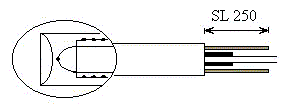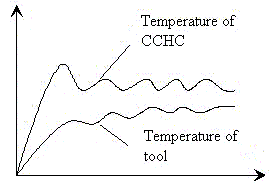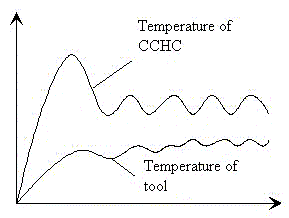CCHC with intern thermocouple |
|
|
|
The whole range of cartridge heaters can be equiped with TCJ : Iron/Constantan ou de TCK: Nickel Chrome/Nickel Alloyed, with or without special leads and accessories.
Standard : leads and TC length : 1000 mm (maxi)
On demand : length 500 or 250 mm
We can provide 4 different positions for the internal thermocouple according to the final use and accuracy required :
TC at the bottom of the CCHC
TC at the bottom of the CCHC, insulated from earth
TC in the center of the heating core
TC in the center of cartridge near the tube
Style of thermocouple and norms
| Polarity | International | French | American | German | English | Japanese | |
| Norms | IEC 584 | NFC 42324 | ANSI MC 96.1 | DIN 43714 | BS 1843 | JICS 1610.1981 | |
| J 0 to 760°C |
Iron (+) magnetic |
Black | Yellow | White | Red | Yellow | Red |
| Constantan(-) No magnetic |
White | Black | Red | Blue | Blue | White | |
| K 0 to 1260°C |
Ni. Chrome(+) no magnetic |
Green | Yellow | Yellow | Red | Brown | Red |
| Ni. Alloyed(-) Magnetic |
White | Purple | Red | Green | Blue | White | |
Important :
All operating temperatures of the chart are measured on the conducting wires of the thermocouple probes.
According to the mounting and use the TC can be facing temperatures much higher than indicated for the regulation system (especially for TC 1 and TC 2) and result to be damaged (see below graph).
TC J1 or TC K1
Solution not recommanded for hight temperature or flux (W/cm²).
The thermocouple is located at the bottom of the CCHC, not insulated
from the earth.
Mounted in a hole opened at both ends, or too big, the
thermocouple will lead to overheating, rapid damages
on the cartridge heater, and non-precise regulation
of the mold.
If the cartridge is mounted in a blind hole it will supply a good reading of the temperature with an average response time.
|
Special assembly
 |
 |
TC J2 or TC K2
The thermocouple is located at the bottom of the CCHC
but insulated from the earth. Very used to protect the electronic part of the regulation. Response time : slow. Precautions of use : same than above.
|
Standard assembly for Ø 6.35 to 8
 |
 |
TC J3 or TC K3
The junction of the thermocouple is located in the heating core
to monitor the inner temperature of the CCHC.
It can be extremely helpful in evaluating the heat transfer efficiency of the application, and avoiding overheating parts in the mold. Useful for uses which require precise measures of temperature and very short response time.
|
Standard assembly for Ø 9.52 to 20
 |
 |
TC J4 or TC K4
 |
Special assembly only for Ø 12.5 à 20 |